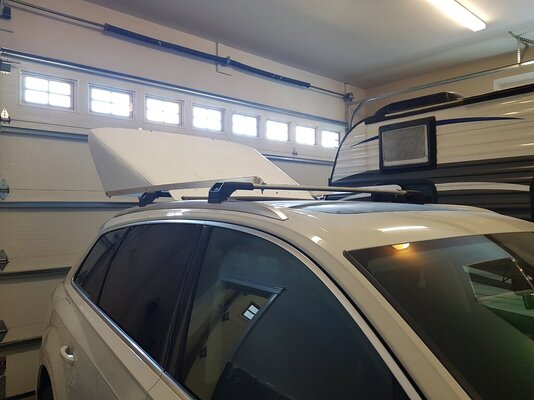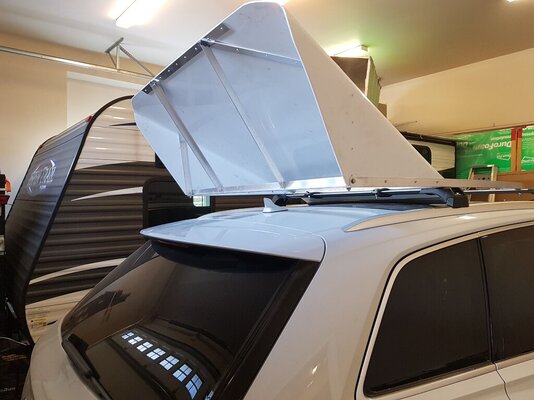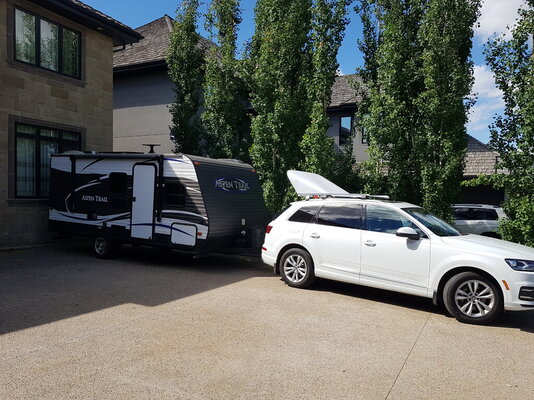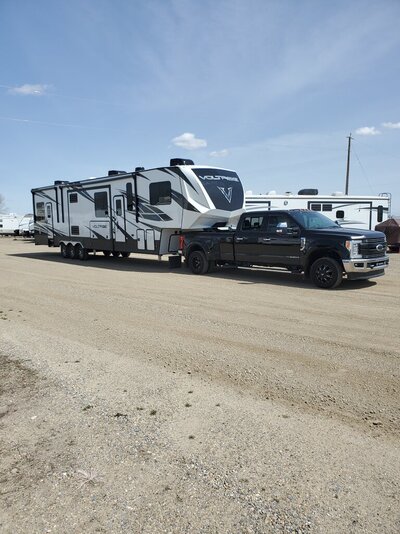MoInEd
Well-known member
We have a 21' travel trailer (single axle) that we tow with our Audi Q7 (two adults and two kids). The Audi has excellent gas milage (on flat highway, doing 100km/hr consumption is under 7L) but when pulling the trailer the consumption is around 20L/100km. The main issue I think is the very bad shape of trailer and the drag (air). According to my friend (Ph.D. in Mechanical engineering) it's like pulling a wall behind you. I have engineering background myself and have experience in design and building things from scratch.
I have searched for commercial wind deflectors and can only find one such product but doesn't seem very good:
 www.icondirect.ca
www.icondirect.ca
I have decided to build one myself. My friend is doing some simulation/analysis to come up with the best angle/sizes but I have some good ideas already and will attempt building it based on my own design soon (will tweak based on his calculations later).
My (very rough) estimation is it should reduce my consumption by 10-20% but can't be sure until I build and test it! I have already bought the parts, have my design and ready to go. It will be easy to install/remove on my roof cross bars.
Anybody has every done one like this?
I have searched for commercial wind deflectors and can only find one such product but doesn't seem very good:
AeroShield Wind Deflector | RV Wind Deflectors | Truck, RV wind deflector for towing trailers
The AeroShield Wind Deflector ensures smoother handling and reduces wind resistance. Enjoy better fuel economy and decrease wear on your vehicle. Low shipping anywhere in the USA & Canada. See for yourself, order yours today!
I have decided to build one myself. My friend is doing some simulation/analysis to come up with the best angle/sizes but I have some good ideas already and will attempt building it based on my own design soon (will tweak based on his calculations later).
My (very rough) estimation is it should reduce my consumption by 10-20% but can't be sure until I build and test it! I have already bought the parts, have my design and ready to go. It will be easy to install/remove on my roof cross bars.
Anybody has every done one like this?




